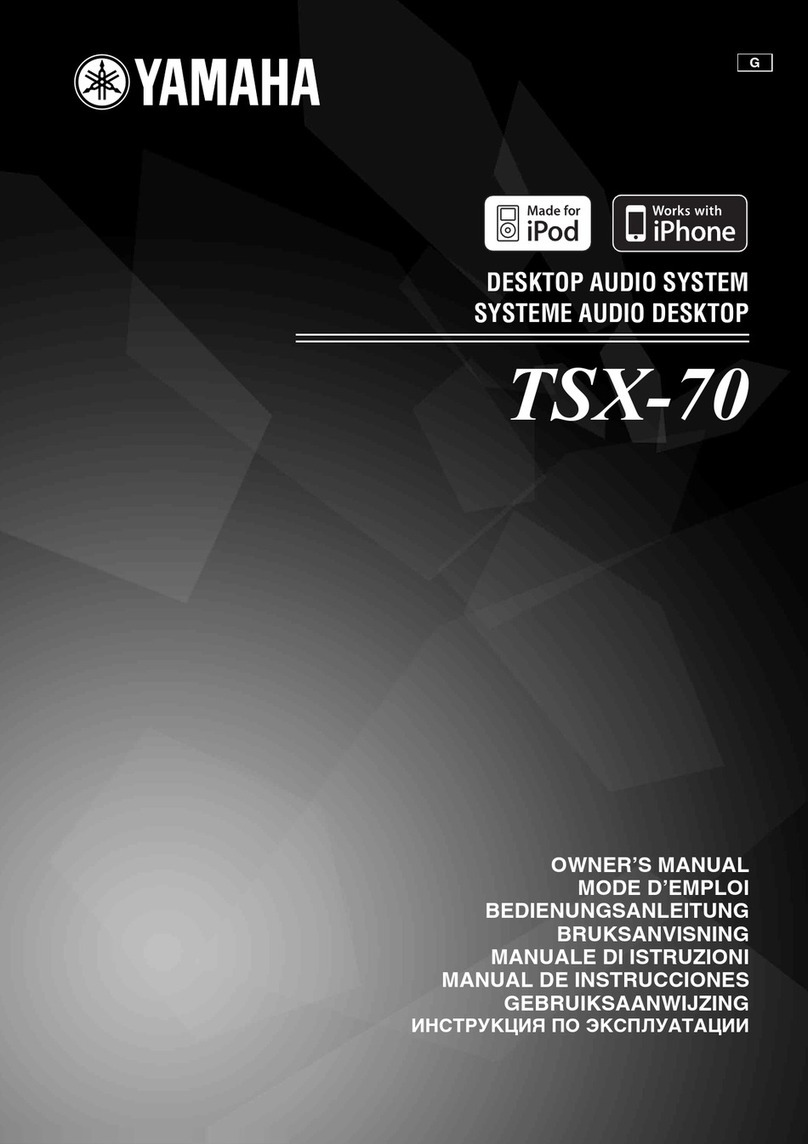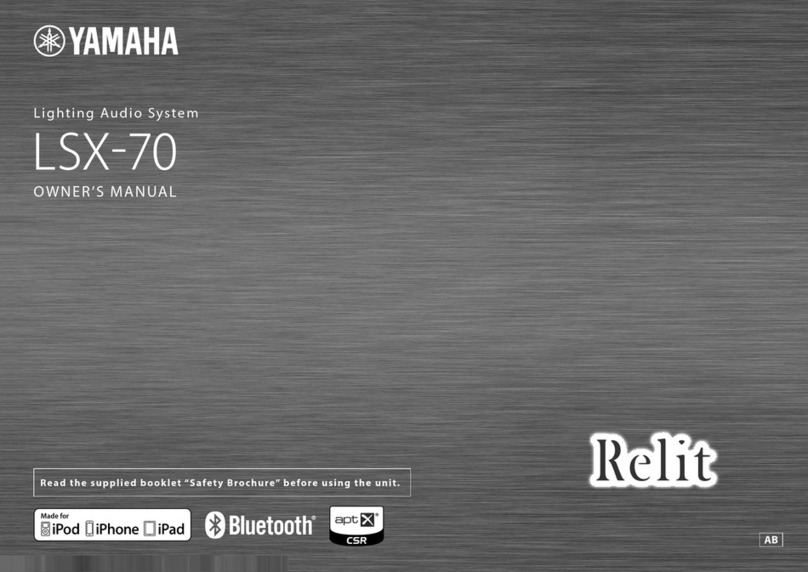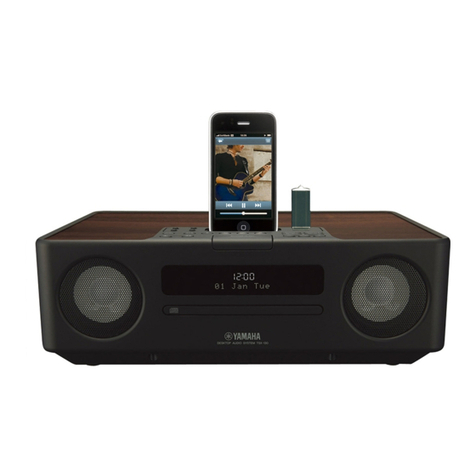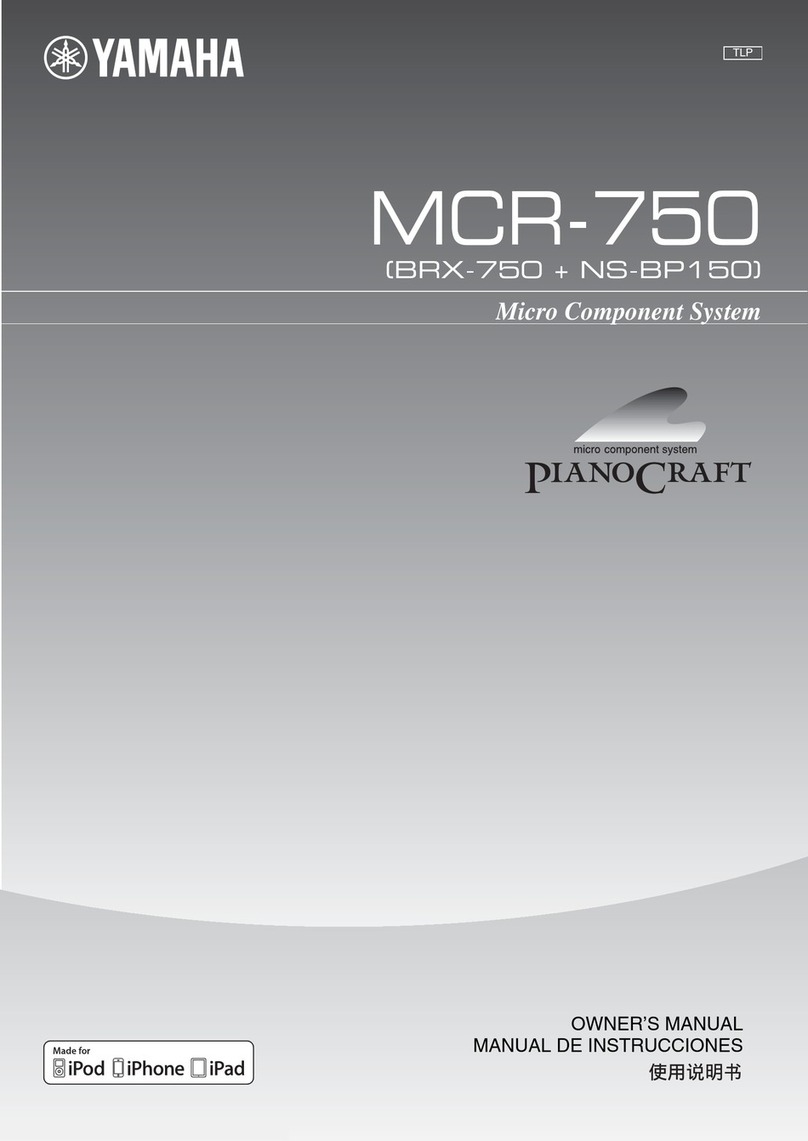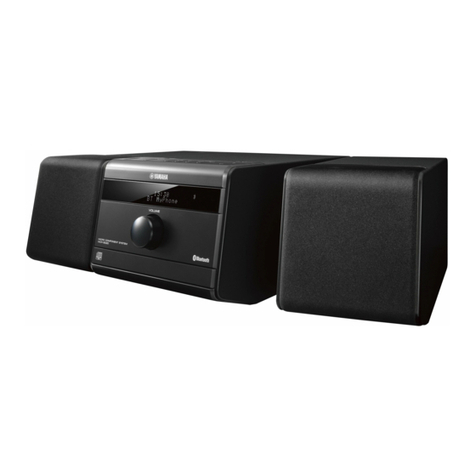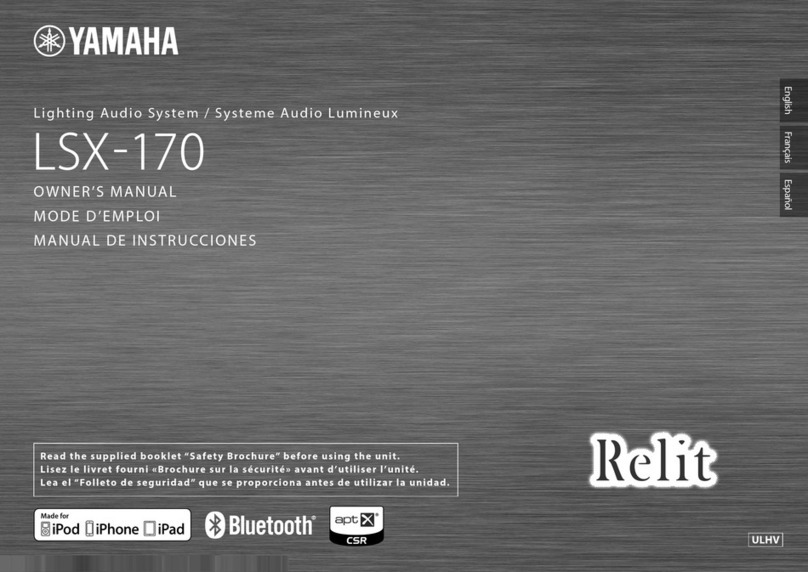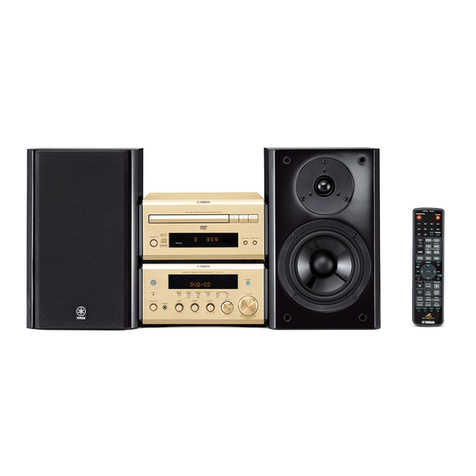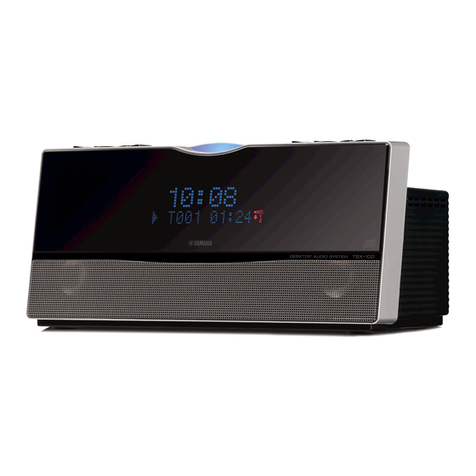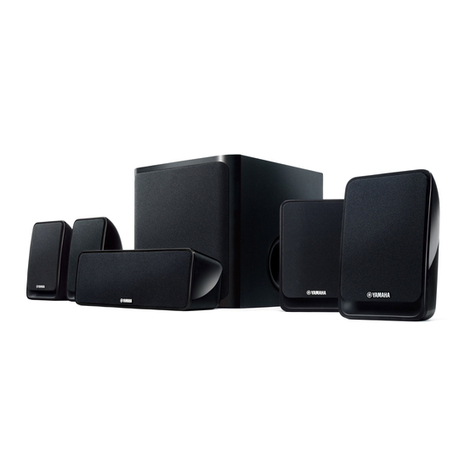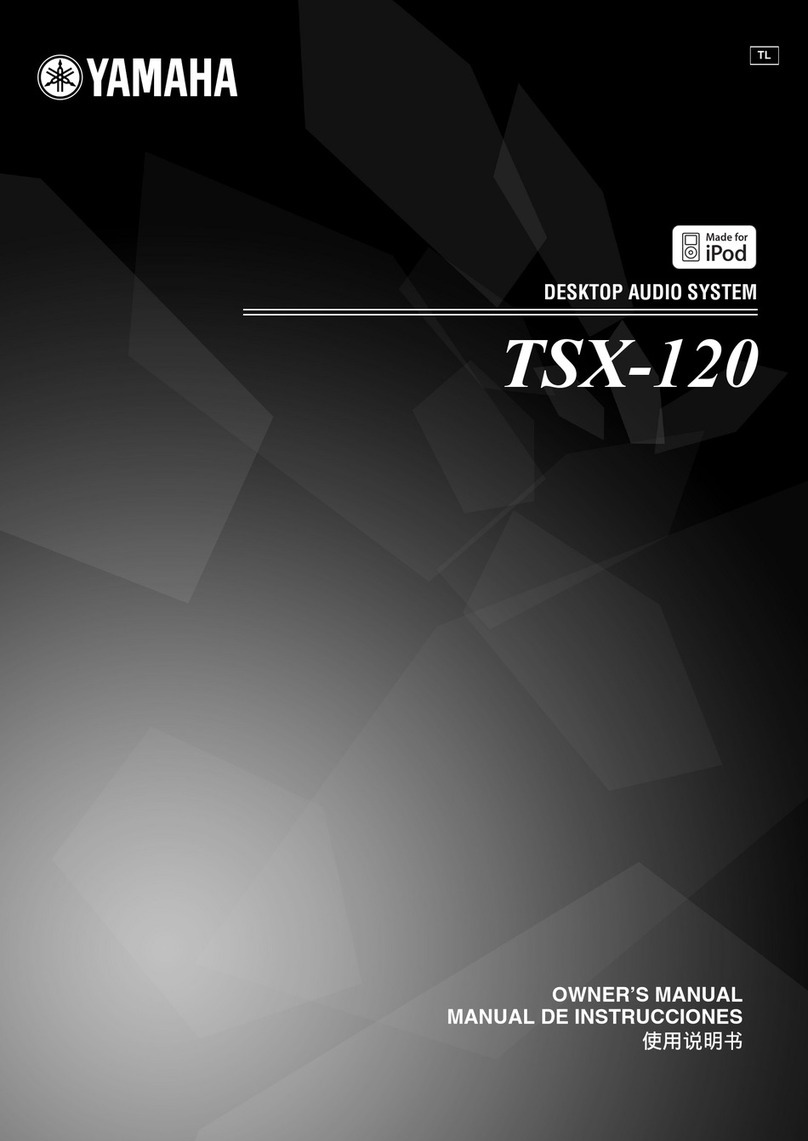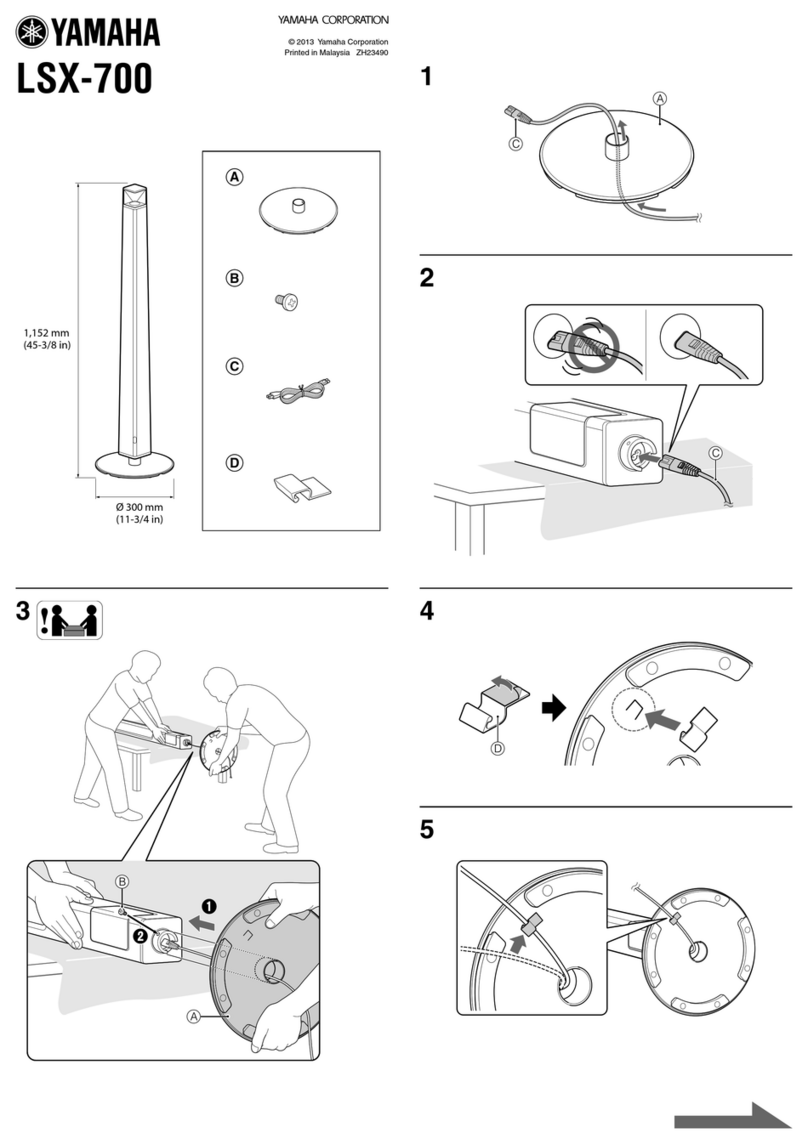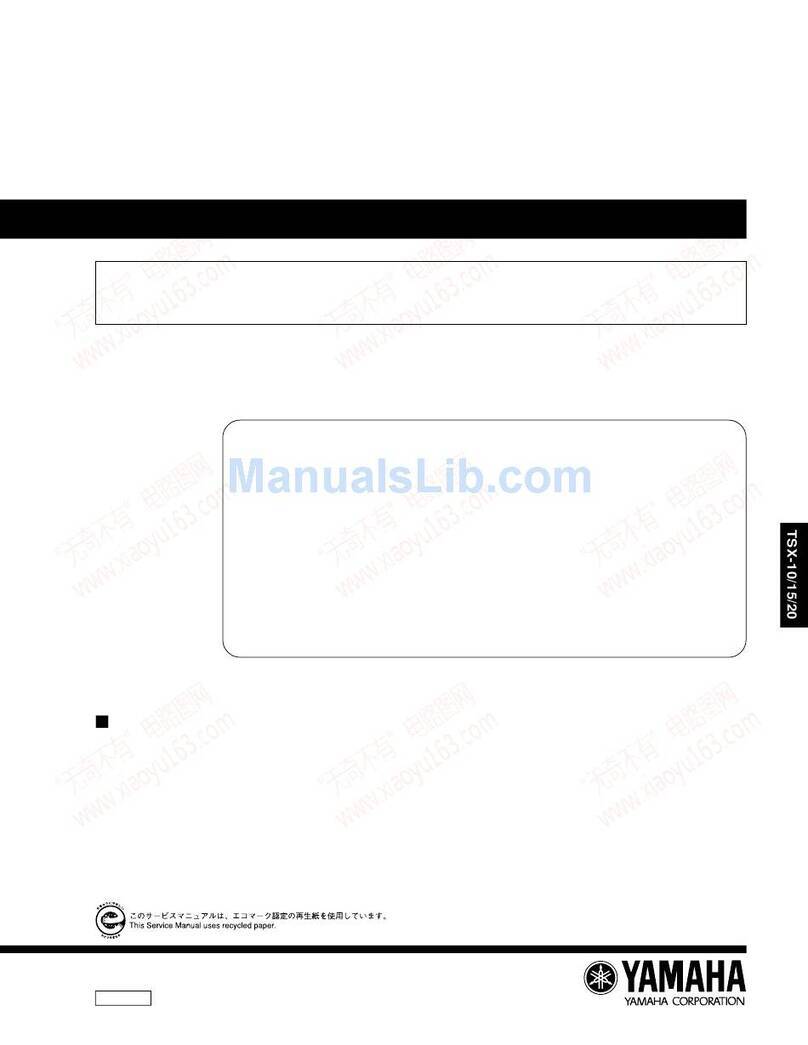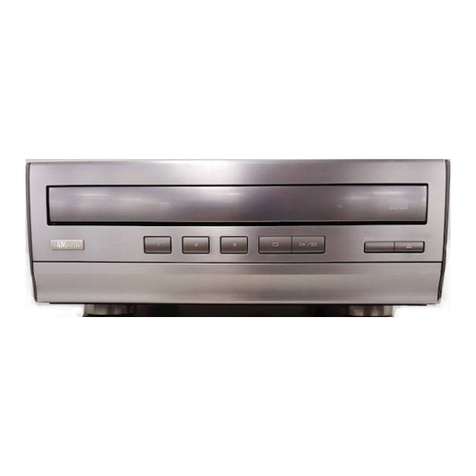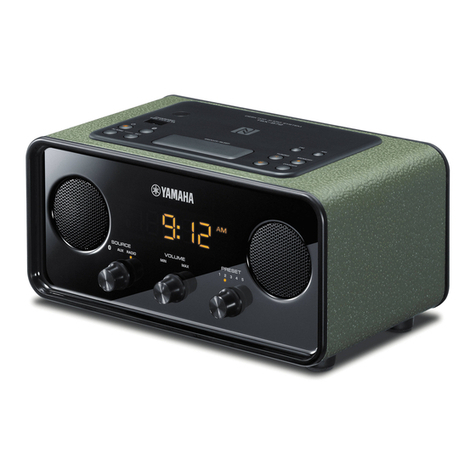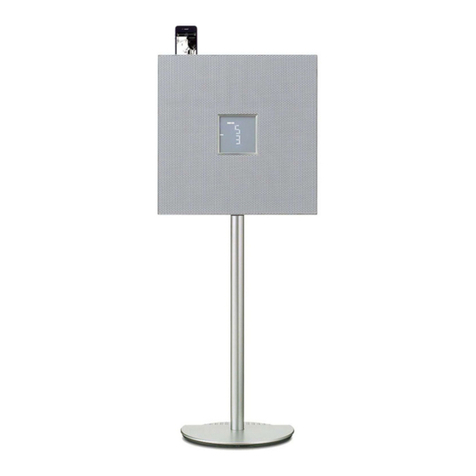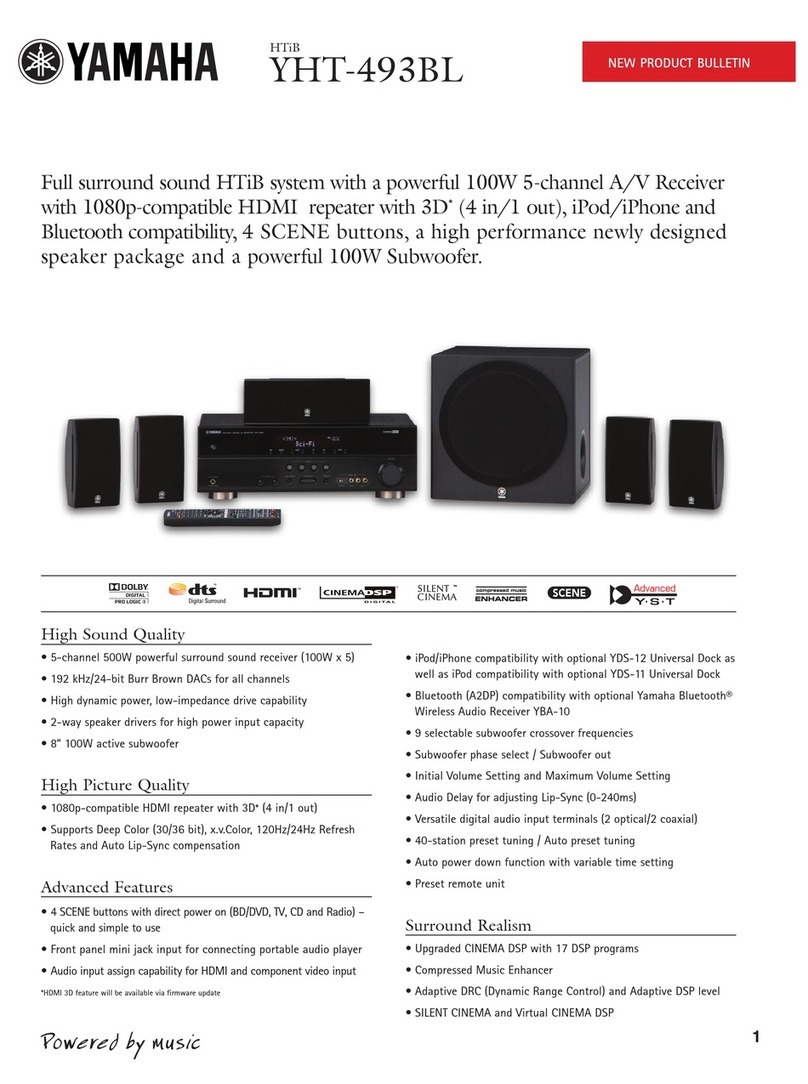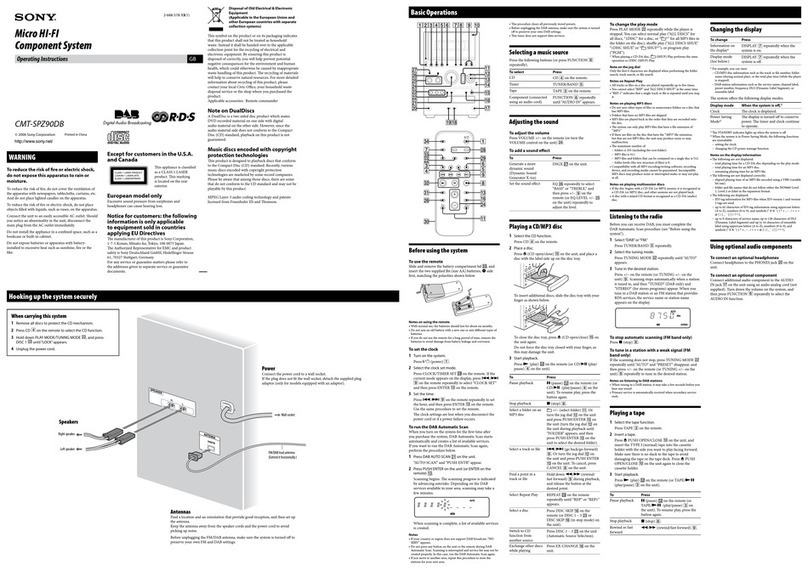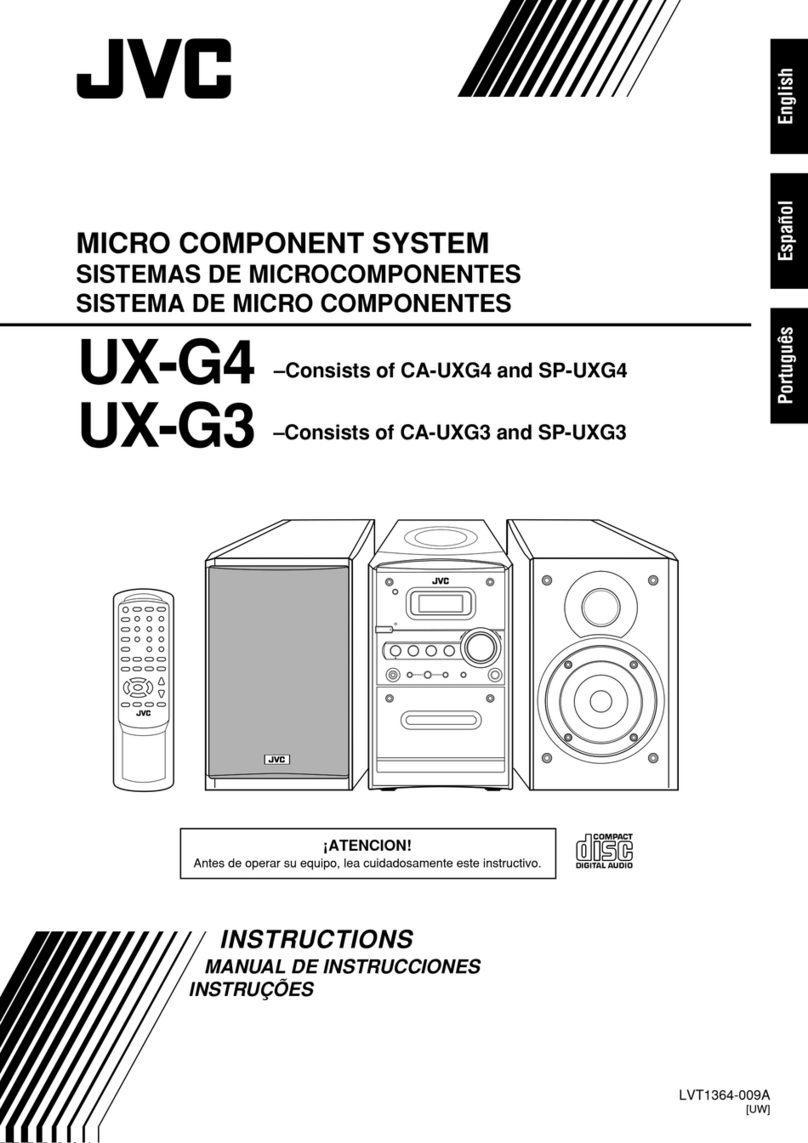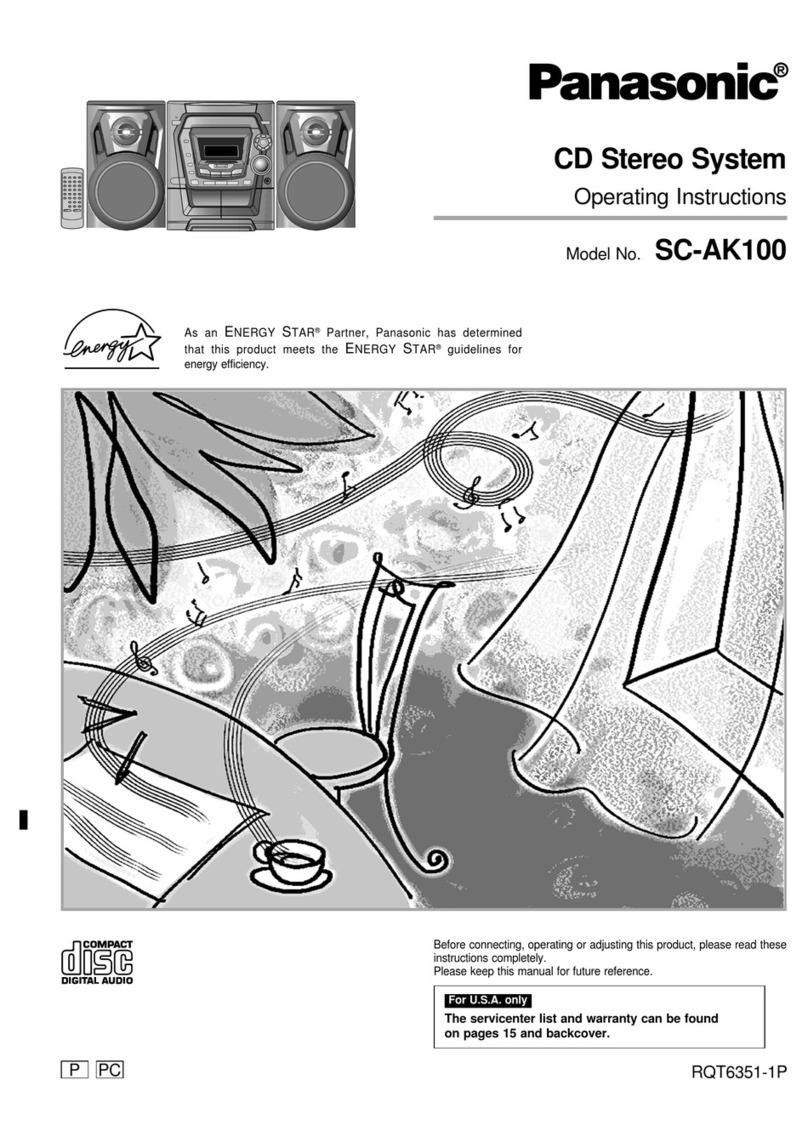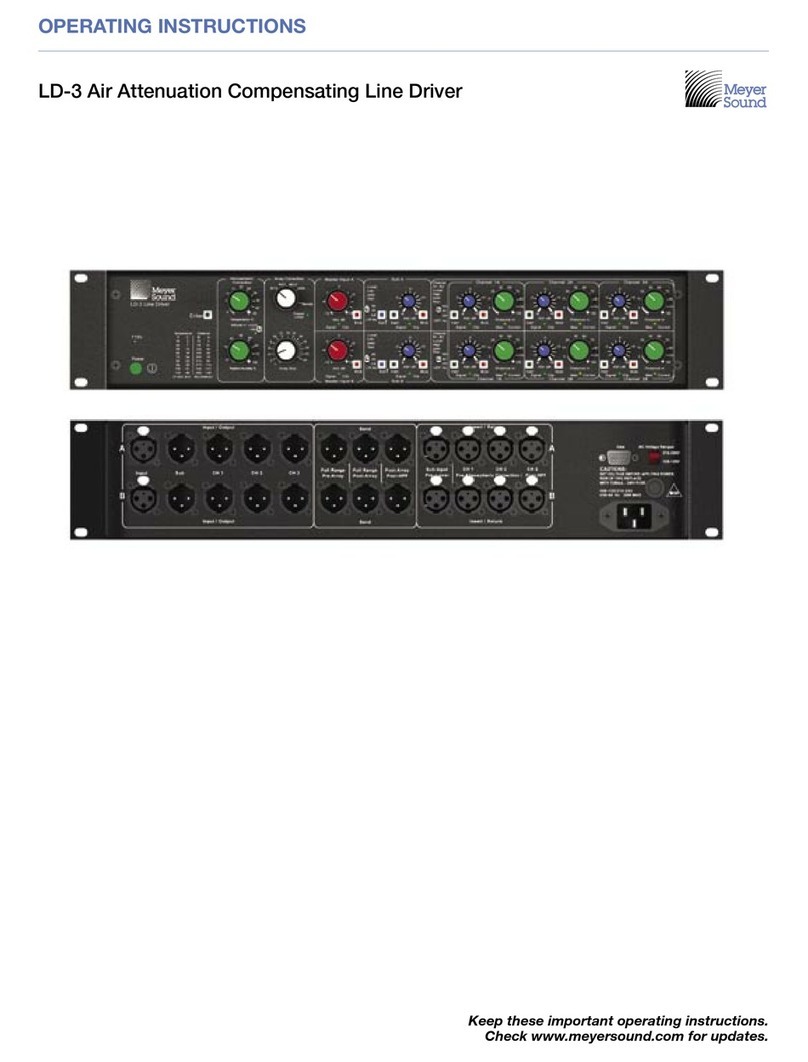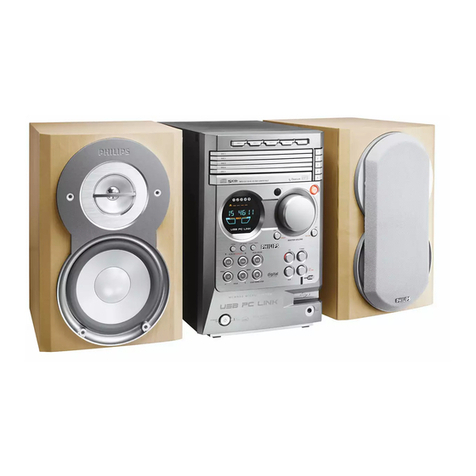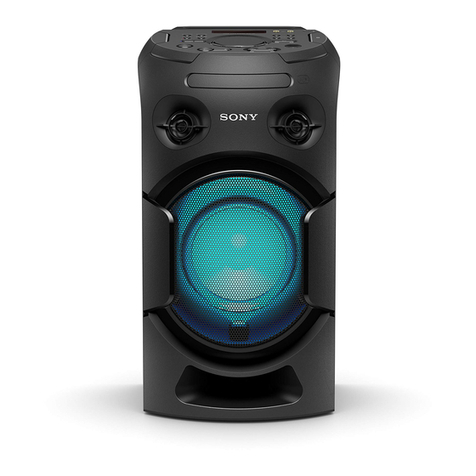
E-1
English
■To assure the finest performance, please read this manual
carefully. Keep it in a safe place for future reference.
■Choose the installation location of this system carefully. Avoid
placing it in direct sunlight or close to a source of heat. Also
avoid locations subject to vibration and excessive dust, heat,
cold or moisture. Keep it away from sources of hum such as
transformers and electric motors.
■Do not operate this system upside-down. It may overheat,
possibly causing damage.
■Never open the cabinet. If something drops into the set, contact
your dealer.
■The openings on the main unit cover assure proper ventilation
of the main unit. If these openings are obstructed, the
temperature inside the main unit will rise rapidly. Avoid
placing objects against these openings, and install the main
unit in a well-ventilated area to prevent fire or damage.
■Always set the VOLUME control to minimum before starting
an audio source play. Increase the volume gradually to an
appropriate level after play has started.
■When not planning to use this system for a long period of time
(ie., vacation, etc.), disconnect the AC power plug from the
wall outlet.
■Grounding or polarization – Precautions should be taken so
that the grounding or polarization of this system is not
defeated.
■Do not use force on switches, controls or connection wires.
When moving the main unit, first disconnect the power plug
and the wires connected to other equipments. Never pull the
wire itself.
■If an external appliance (TV, radio, etc.) interferes with the
operation of this system, move the main unit away from such
appliance.
■Do not attempt to clean this system with chemical solvents as
this might damage the finish. Use a clean, dry cloth.
■Be sure to read the “Troubleshooting” section regarding
common operating errors before concluding that this system is
faulty.
■To prevent lightning damage, disconnect the AC power plug
and the antenna cable when there is an electric storm.
■Do not plug the AC power plug to the wall socket before you
finish all connections.
■Never allow metallic items (e.g. screwdrivers, tools, etc.) to
come near the tape deck’s record/playback head assembly.
Doing so may not only scratch or damage the head’s mirror-
smooth finish, it may change the magnetic characteristics of
the heads, causing a deterioration in reproduction performance
quality.
■Although the tape deck’s record/playback heads are of high
quality with outstanding reproduction characteristics, they can
get dirty through the use of old tapes or from dust
accumulation over time. This can have a serious effect on
reproduction quality. Clean the heads regularly with
commonly available head cleaners or with cleaning solutions.
■The voltage to be used must be the same as that specified on
this system. Using this system with a higher voltage than
specified is dangerous and may result in a fire or other types of
accidents causing damage. YAMAHA will not be held
responsible for any damage resulting from use of this system
with a voltage other than specified.
■The sound level at a given volume setting depends on speaker
location and other factors. Care should be taken to avoid
exposure to sudden high levels of sound, which may occur
when turning this system on with the volume control setting at
high. Also avoid exposure to continuous high levels of sound.
■Sudden temperature changes and storage or operation in an
extremely humid environment may cause condensation inside
the cabinet. Condensation can cause this system to
malfunction.
To eliminate condensation:
• Pickup
Leave the power on with no disc loaded until normal play
becomes possible (about 1 hour).
• Tape head
Leave the power on with no tape loaded until normal
playback becomes possible (about 1 hour).
Note:
If condensation forms on the tape head, dirt or dust may
accumulate during use.
• Remote control
Wipe off condensation on the transmission window with a
soft cloth before operating this system.
■The carousel will turn when you open the disc tray by pressing
OPEN/CLOSE; therefore, make sure the carousel stopped
moving completely before you perform further operations such
as placing or removing a disc from the disc tray. Otherwise,
you may cause damage to your discs, or you might injure
yourself.
Precautions: Read this before operating your system
